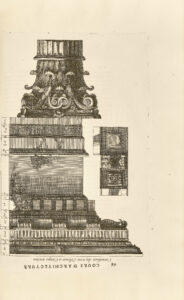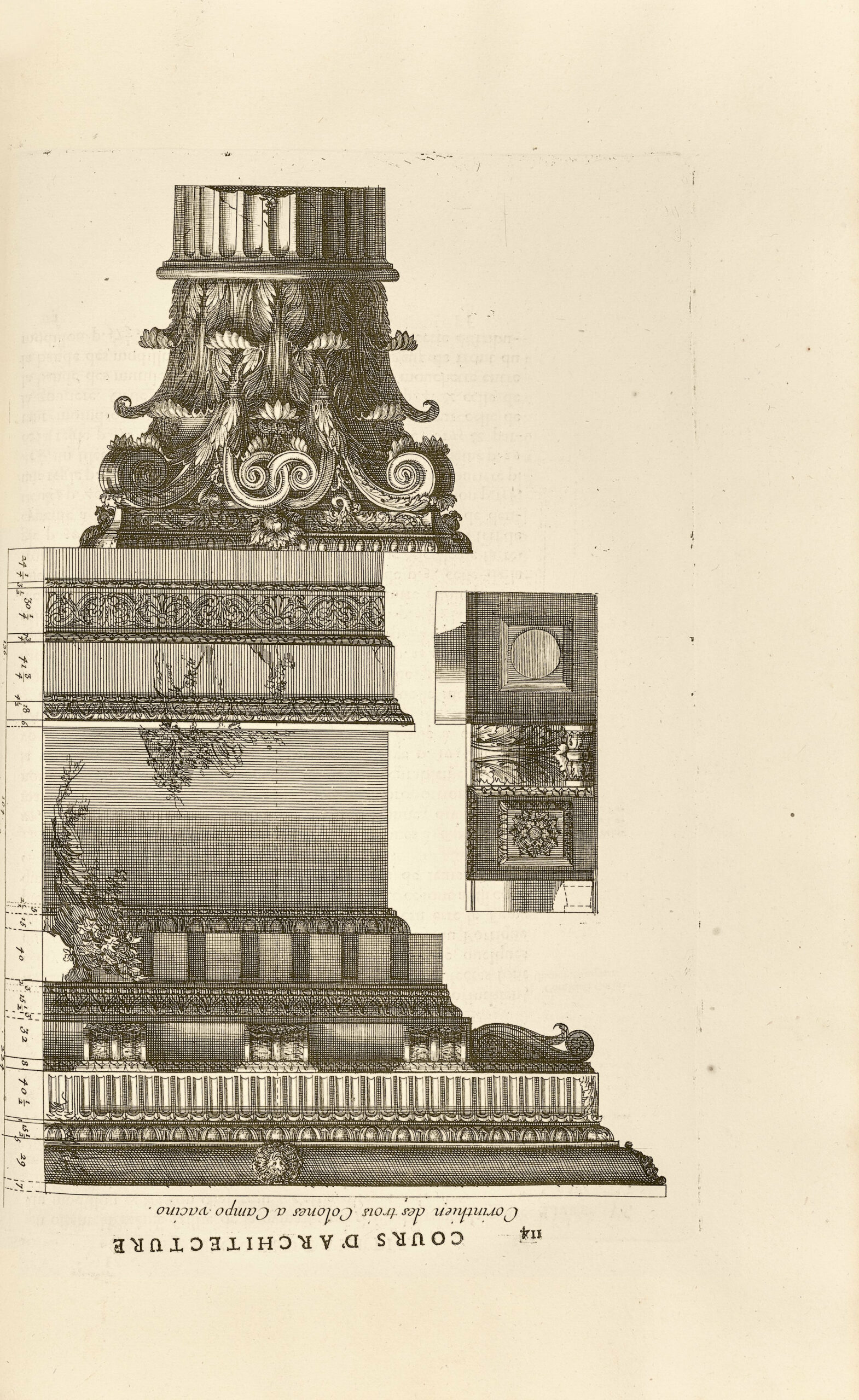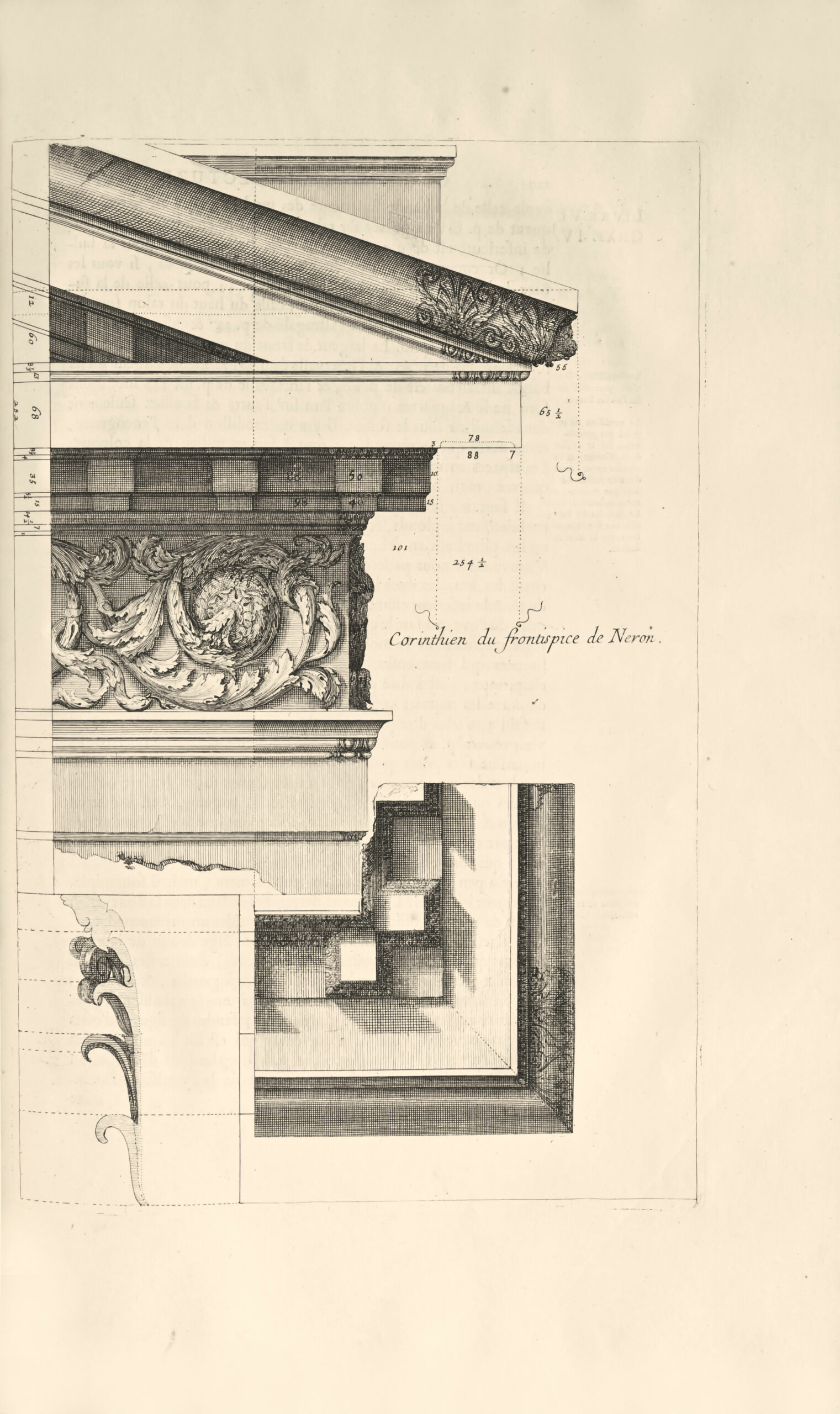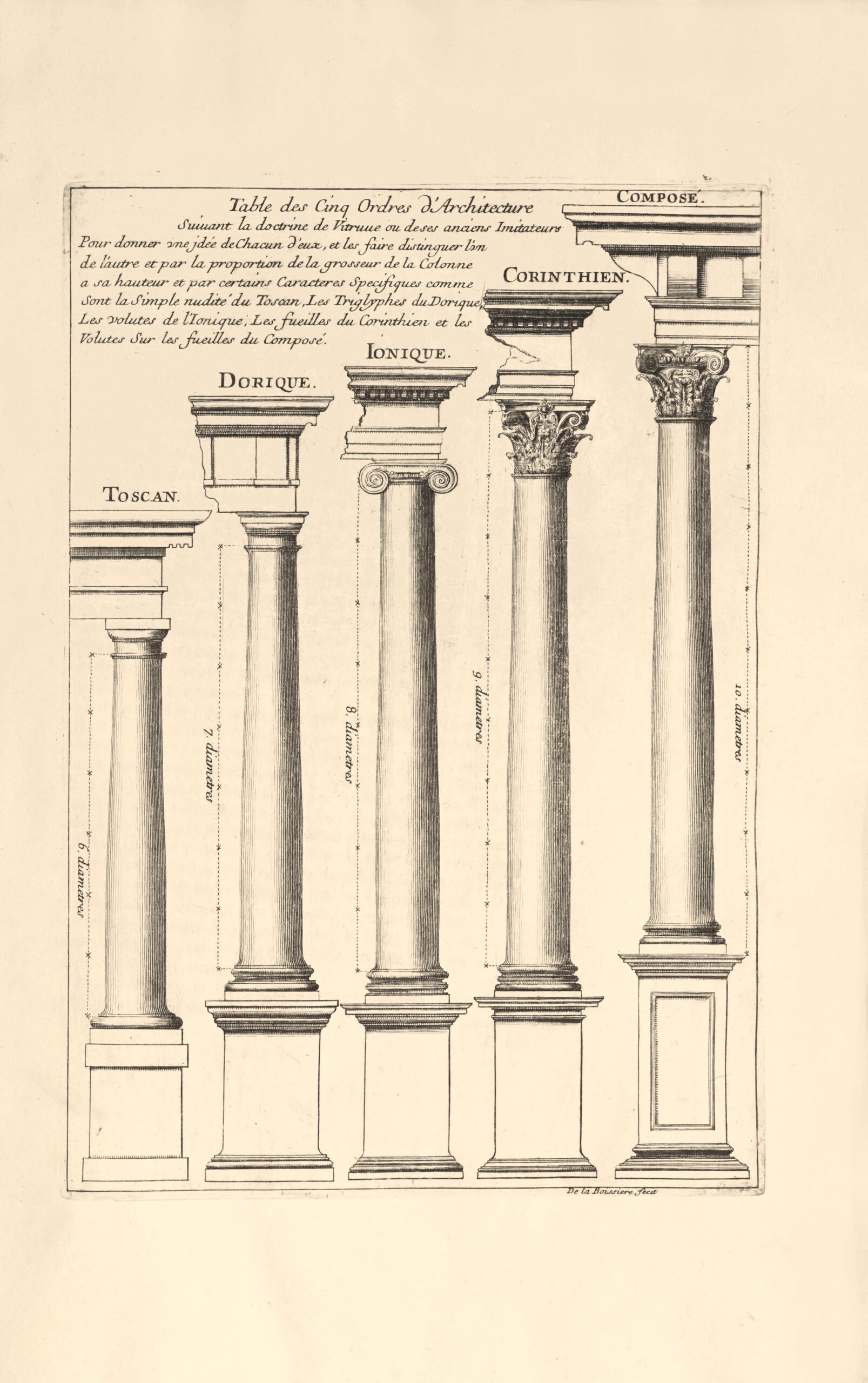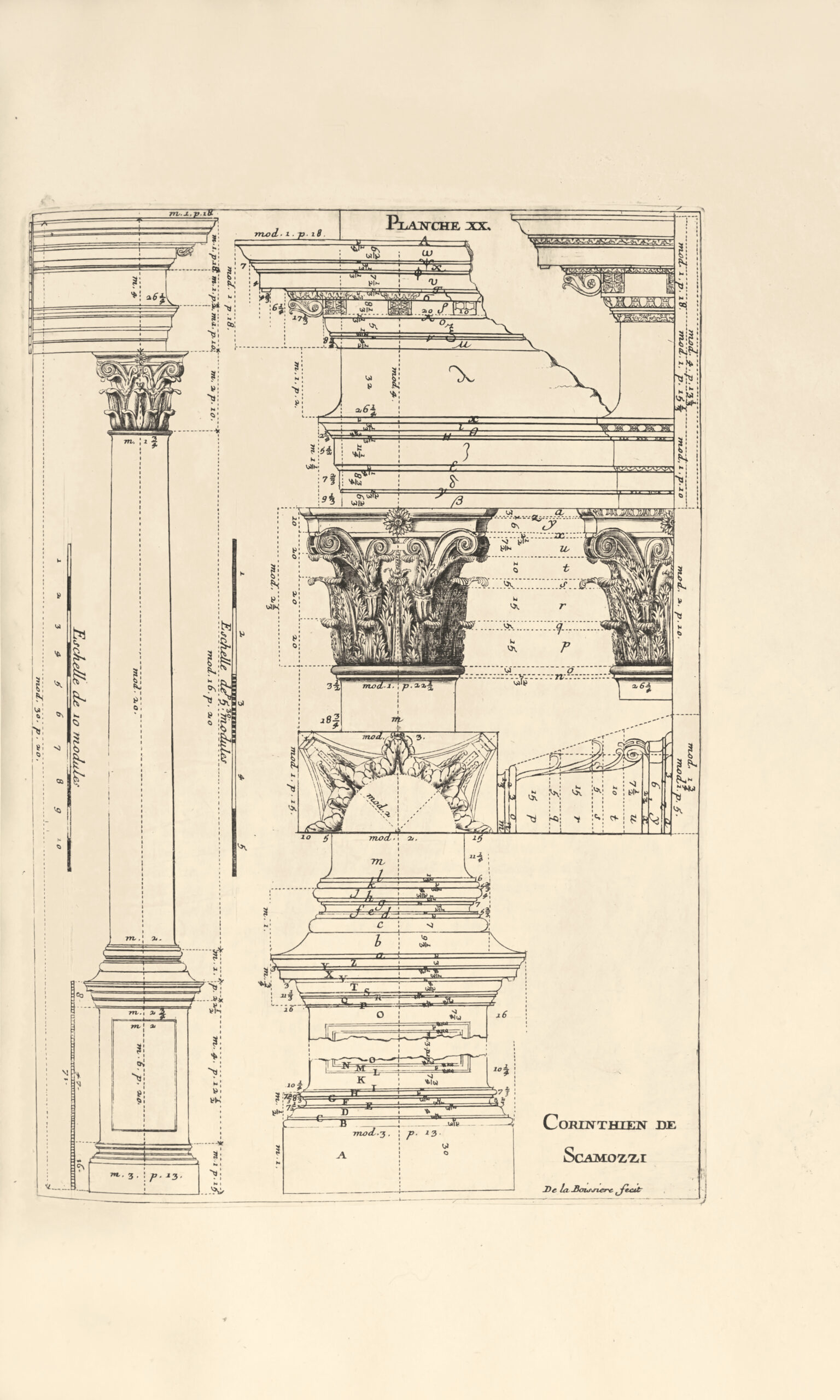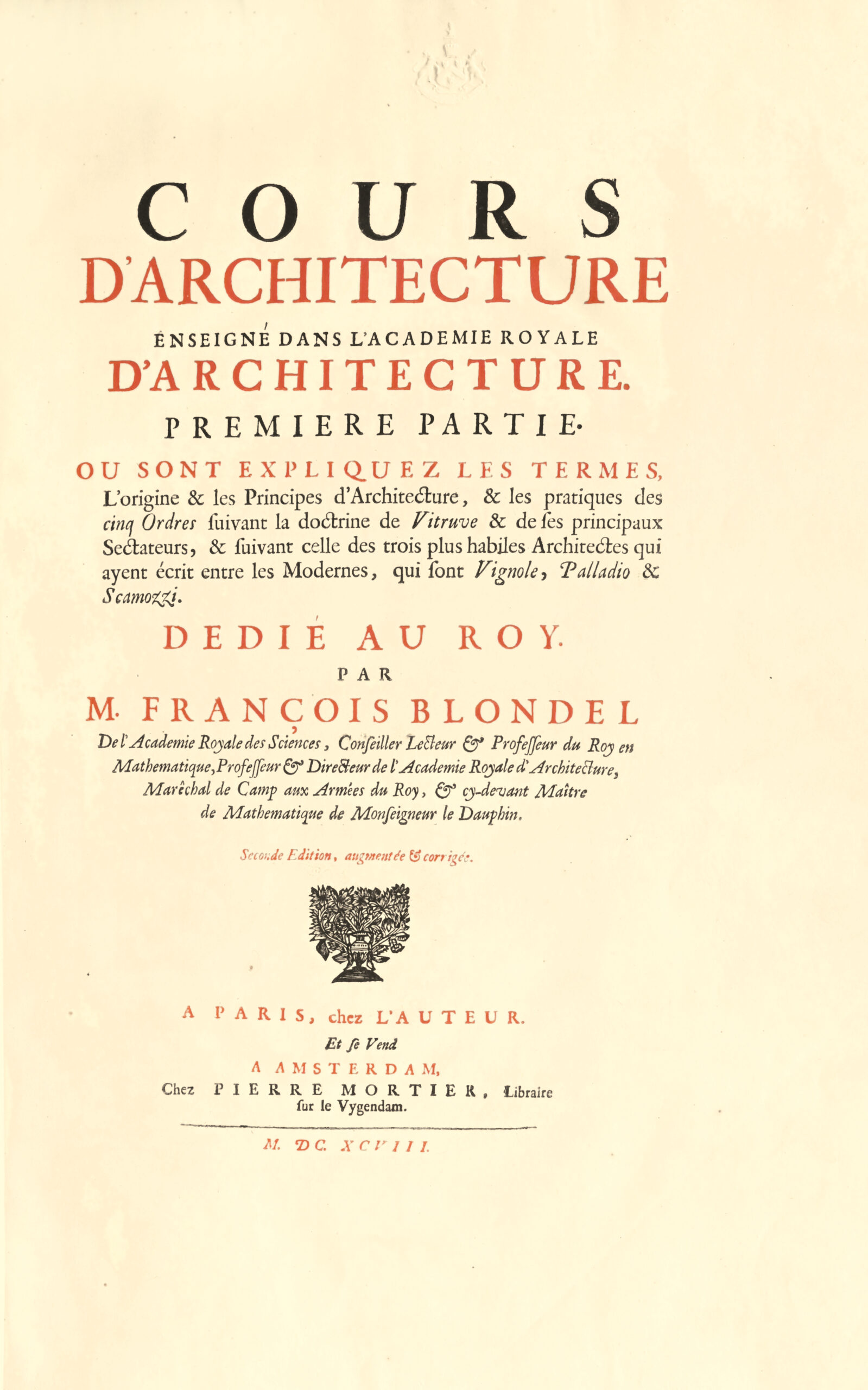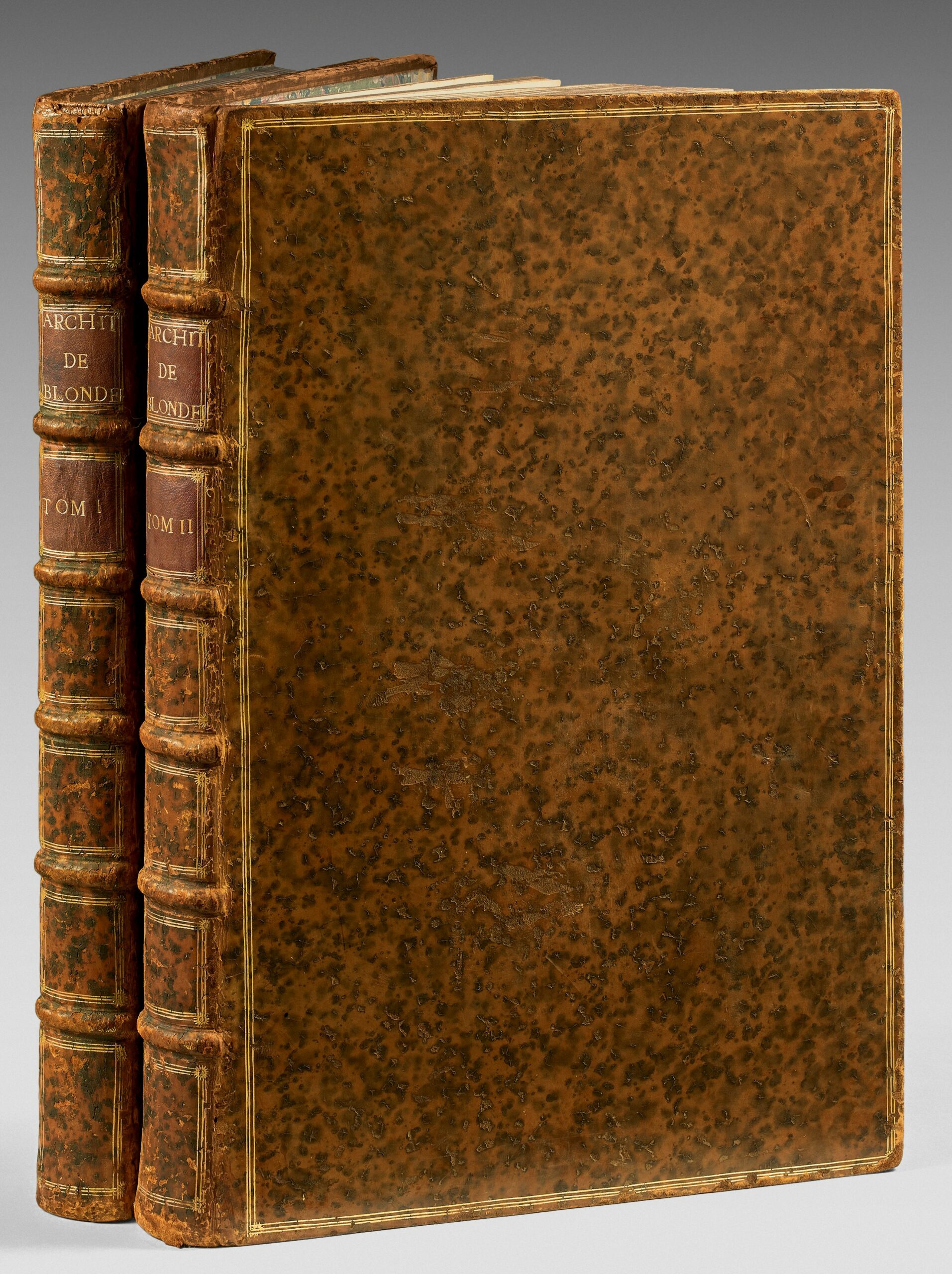Paris et Amsterdam, 1698.
Five parts in 2 folio volumes: I/ 1 frontispiece, (12) ll., 154 pp, (4) pp. of table, 1 frontispiece, (4) ll., 1 folding plate, (2) errata ll., 312 pp.; II/ 1 frontispiece, (6) ll., pp. 313 to 799, (2) errata ll., rest. in lateral margin of 2 ll.
Full granite brown calf, triple gilt fillet around the covers, ribbed spine, red speckled edges, hinges rubbed. Contemporary binding.
425 x 285 mm.
Copy on large Holland paper.
Second original edition, “enlarged and corrected“, reprinted from the first edition of 1675-1683.
Title page printed in red and black, 3 engraved frontispieces, one folding plate, numerous engraved illustrations including 25 full-page engravings with blank verso, 12 headpieces and 4 tailpieces.
Blondel was born in 1617. He was involved in several diplomatic negotiations. In his Cours d’architecture, he states that he traveled to Egypt, and that in 1659, he came to Constantinople as an extraordinary envoy of the King of France, to deal with the detention of the French ambassador. The success of this negotiation earned him a brevet of state councillor, and he was appointed to teach the dauphin, son of Louis XIV, belles-lettres and mathematics. He also taught mathematics at the Royal College.
In 1665, Blondel himself made his architectural talents known when a bridge was built over the Charente at Saintes. He restored it, and placed a triumphal arch on top. In 1669, he was appointed a member of the Academy of Sciences; and the King ordered, by letters patent, that the public works of the city of Paris would henceforth be executed according to the plans drawn by Blondel, which were deposited in the Hôtel de Ville. In 1672, under his direction, the Porte St-Antoine was restored, but demolished in 1777 for reasons of public convenience. In 1674, he carried out the same work on the Porte St-Bernard, a task that is always thankless and often more difficult than the original design. At last, Blondel was finally able to be himself while building the triumphal arch of the Porte St-Denis. He was less concerned with the quantity of ornamentation than with the accuracy of proportions. It should be noted that Blondel himself was the author of the inscriptions placed on the buildings he erected.
His talents were rewarded with the position of director and professor at the Academy of Architecture, established in 1671, and he wrote, under the title Cours d’architecture, the lessons he gave to students. “This excellent work proves how much Blondel had studied his art, and how much he had taken advantage of the insights he had acquired during his travels, through the study of a large number of ancient and modern monuments. The Rochefort rope factory was also built according to Blondel’s plans”.
A very pure copy with very wide margins, preserved in its elegant contemporary bindings.
From James Moore library, with autograph signature.
See less information
